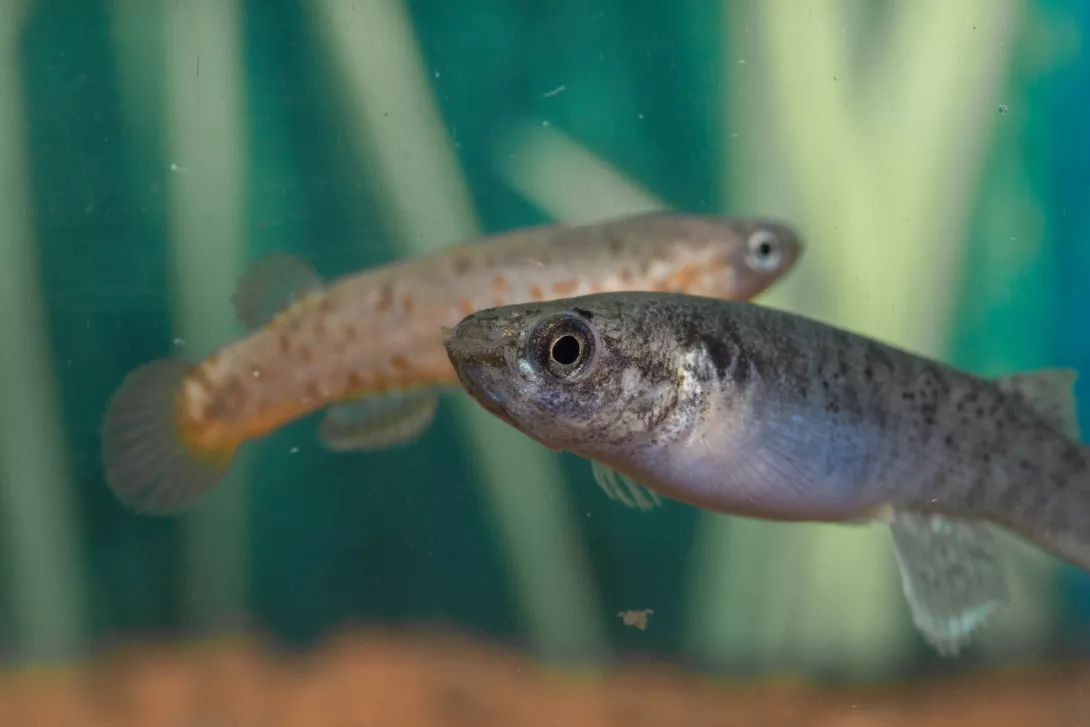
To survive, a species needs to evolve in order to survive diseases and stress in its environment. To do this, it needs the individuals that make up the species to be as different as possible, and therefore genetically diverse. This is what nature does... naturally.
But this is not always the case. Professor Frédéric Silvestre and Doctor Valentine Chapelle are interested in the rivulus or mangrove kilifish (Kryptolebias marmoratus), a small fish whose habitat covers the whole of the Caribbean, from Florida in the United States for the northernmost area and as far south as French Guiana for the southernmost region. This species is amazing in many ways.
First, they like extreme conditions: heat, turbid water with a high sulphur content and low oxygen content. As they can breathe through their skin, they can stay out of the water for several weeks. They could be descendants of the first fish that left the aquatic environment to form the first terrestrial vertebrates, the origin of all land animals, including humans. However, this is not the case. This is called evolutionary convergence.
Autogamy, a mode of reproduction by self-fertilisation
Even more astonishing is that its natural populations are composed solely of hermaphroditic or male individuals. Females do not seem to exist! The proportion of males depends on the temperature of the environment. The warmer it is during embryogenesis, the more hermaphrodites there are. It is the only known vertebrate that is self-fertilising. Its lineages are therefore quasi-clonal and genetically very close to the parent. How could this fish evolve and survive in such a hostile ecosystem as the mangrove while having so little genetic diversity?
The research project focuses on 4 populations (2 in Florida and 2 in Belize). The northern populations are mainly hermaphrodites with very few or no males. The populations further south have between 40 and 50% males.
The researchers studied the behavioural characteristics (aggressiveness, boldness, etc.) of the individuals in the four populations compared with the genetic diversity in the groups. The findings are surprising. It is in the least genetically diverse population that we find the most diversity in behaviour. But we also know that epigenetic mechanisms play a very important role in the differentiation, adaptation, and evolution of species.
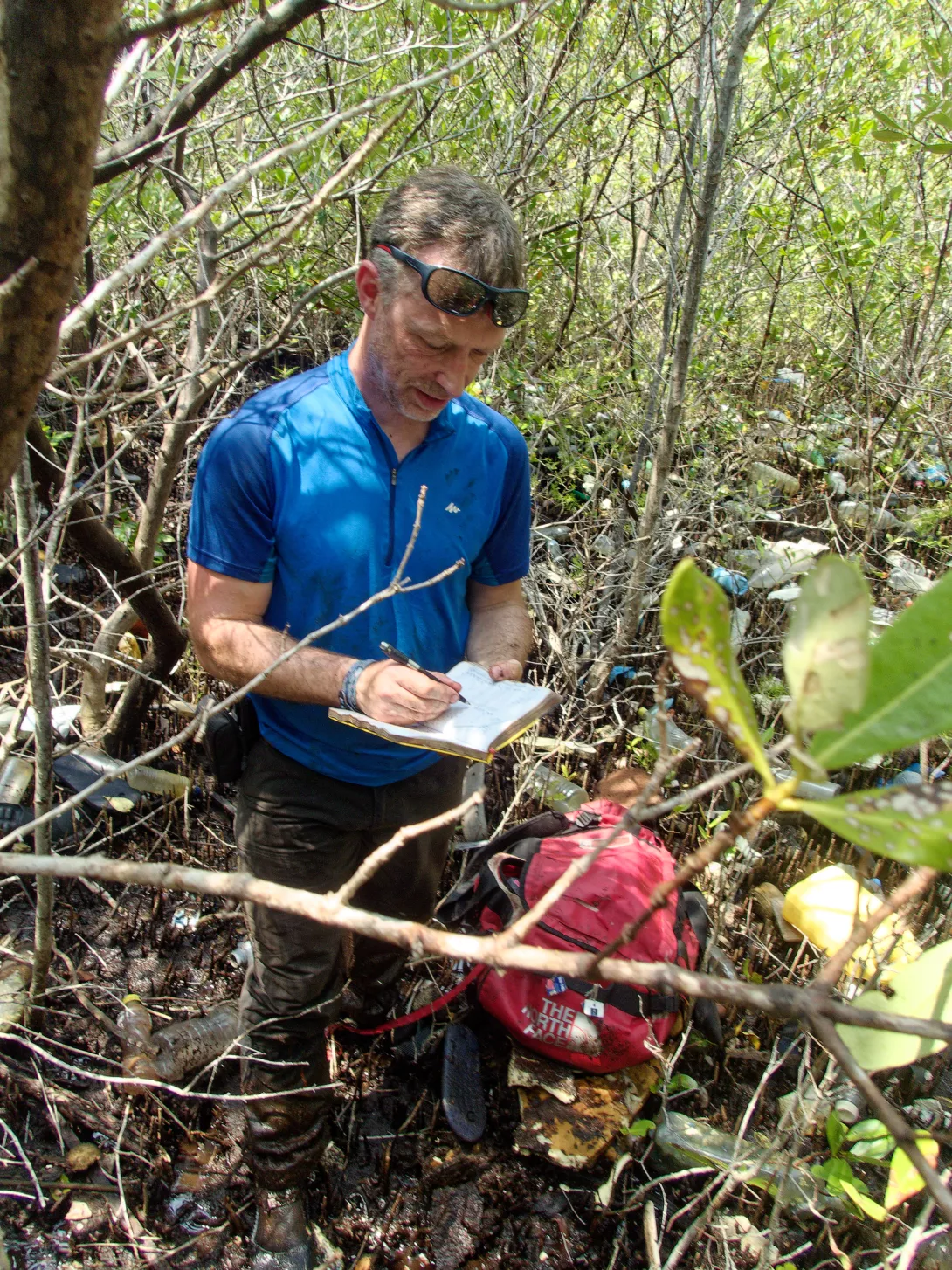
Epigenetics under the microscope
Epigenetics is the study of changes in gene activity that do not involve changes in the DNA sequence and can be transmitted during cell division. These molecular mechanisms regulate the expression of genes, define the functioning of cells and organisms, i.e., their phenotype (morphology, physiology, behaviour, etc.) and therefore the possibility of transmission of heritable traits.
The study of this animal is therefore a good way of differentiating between what is induced by genetics and what is induced by epigenetics, since all individuals are genetically similar. This experiment would be very difficult to carry out with humans, as one would have to use only people with the same genetic characteristics, such as twins.
We are all different, including our personalities. Without our genetic and epigenetic diversity, we would be very fragile in the face of disease since we would all react in the same way. And as we have seen recently with SARS-COV-2, this would be catastrophic.
This fish is therefore a fundamental living model that allows us to deepen our knowledge and understanding of all these mechanisms that allow the diversity, evolution and conservation of species and ecosystems. And undoubtedly to demonstrate that when genetic diversity is low, epigenetic mechanisms can compensate for this low diversity.
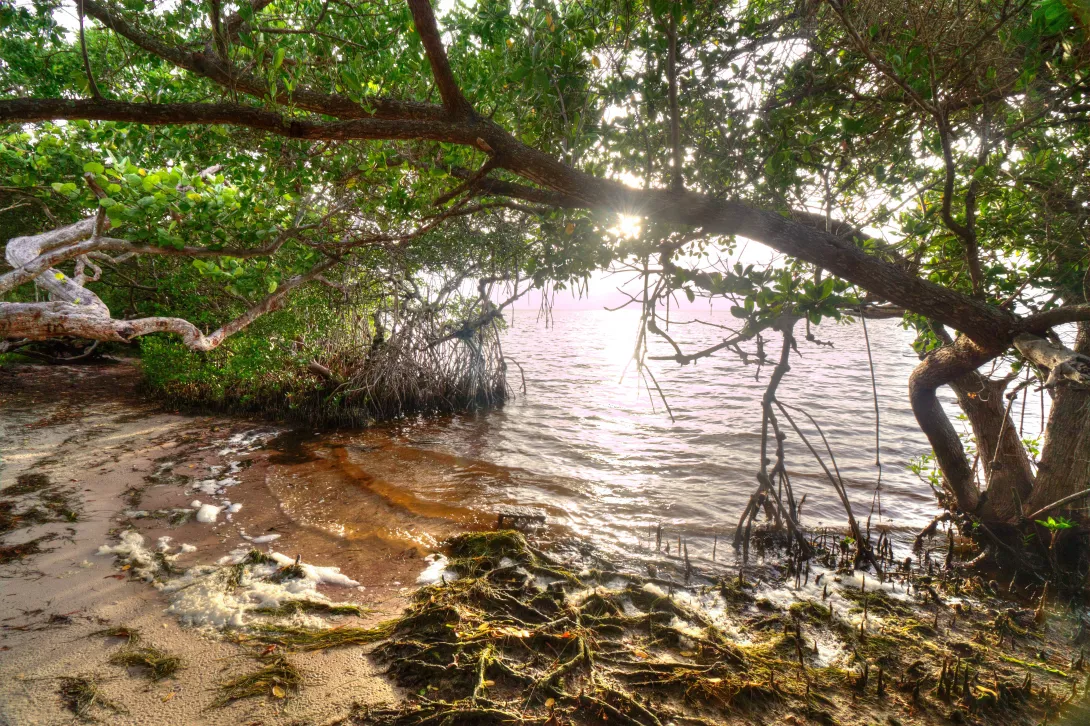
Fieldwork
Capturing these fish, which are only 2 to 3 cm long, is no easy task. The traps are homemade with plastic cups topped with a funnel (a bit like a wasp trap) and are scattered in the mangrove at strategic locations.
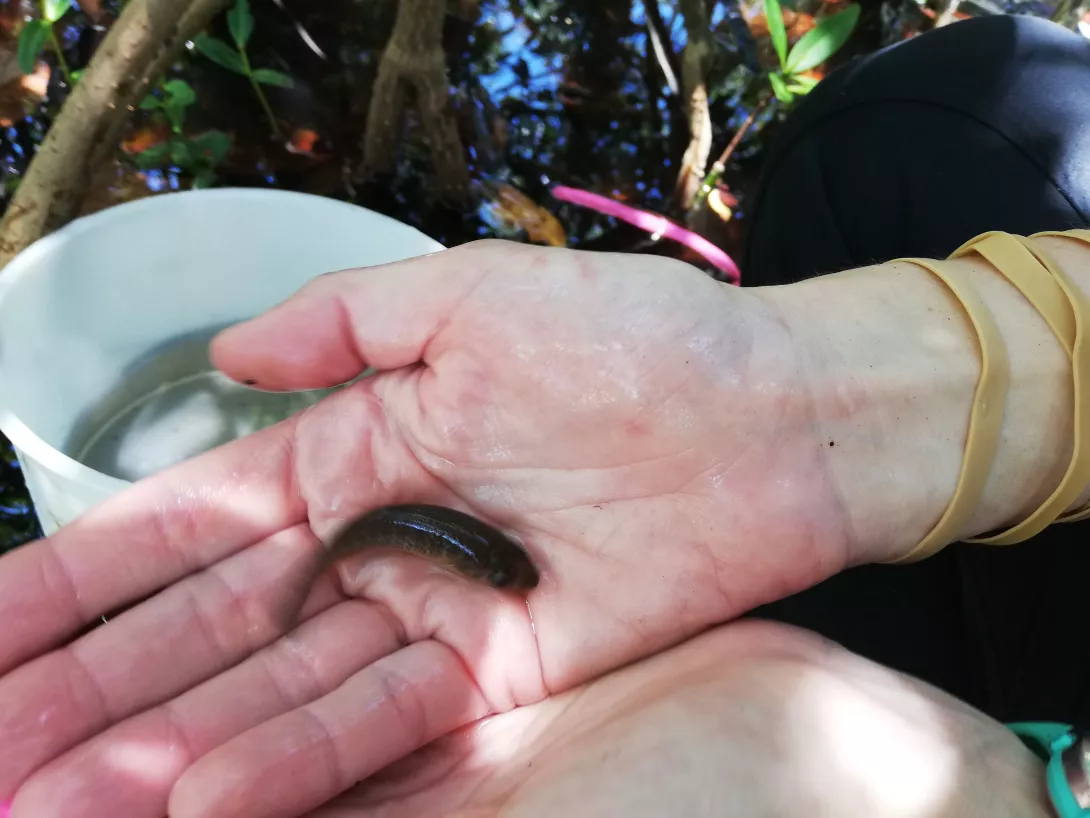
The captured rivulus are then placed in labelled plastic bags to be taken back to the base camp for behavioural testing. The heat makes it difficult to preserve the samples and it is never certain that the material collected on site will be usable once back at the laboratory.
Fortunately, everything went well. A new doctoral student will be joining the team and the researchers hope to be able to leave in a few months to continue the project.
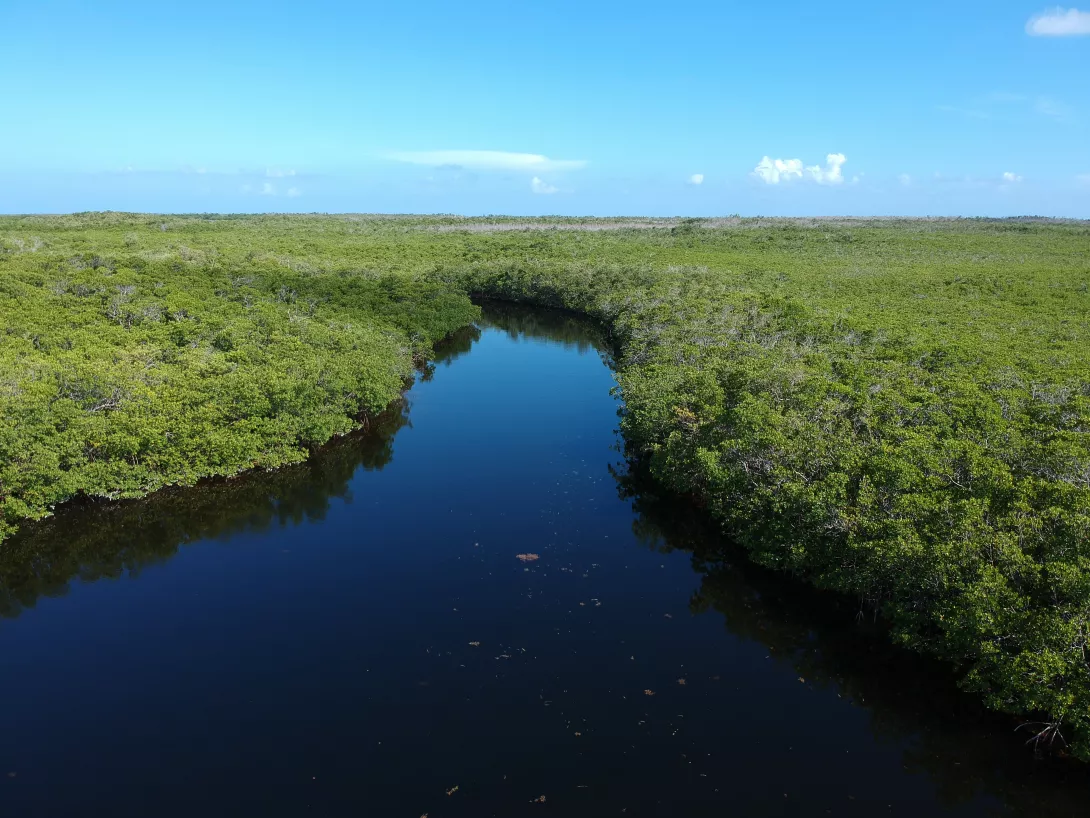
The mangrove is a very important ecosystem for humans and the thousands of species that live there.
Understanding it better is a long-term task that biologists around the world are working on. It is home to unique animals that are perfectly adapted to their environment.
By understanding how it works and how its inhabitants function, we can better protect it.
Searching for the mangrove rivulus
The University of Alabama research team
- Ryan Earley
- Kristy Marson
The University of Namur research team
- Prof. Frédéric Silvestre - ILEE Institute, Environmental and Evolutionary Biology Research Unit (URBE), Laboratory of Evolutionary and Adaptive Physiology (LEAP)
- Dr Valentine Chapelle
- Justine Belik
- Yves Blanco


Express CV
Frédéric Silvestre is a biologist, professor and head of the Biology Department at UNamur. He created and directs the Laboratory of Evolutionary and Adaptive Physiology (LEAP). Frédéric studies how aquatic organisms adapt and evolve in a human modified context.
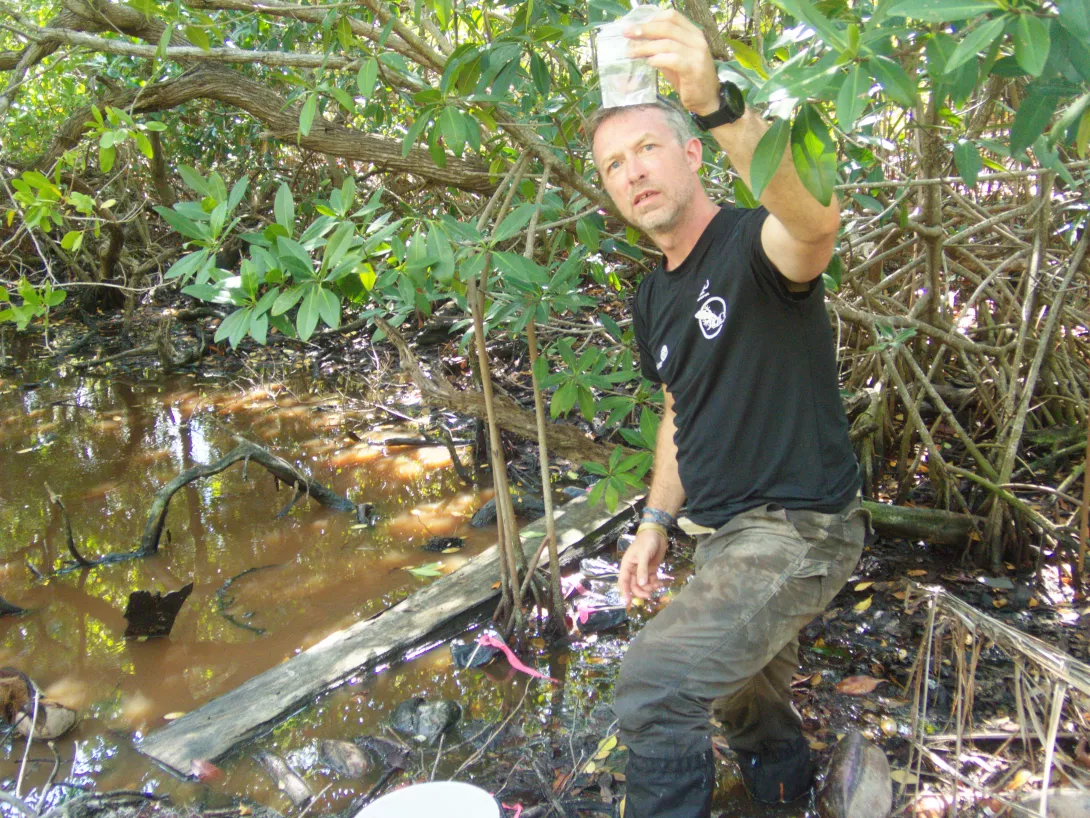
He graduated in zoology from the University of Liège and defended his thesis in the Oceanology Laboratory. He then took a master's degree in environmental management at the ULB where he defended a thesis on the development of ecotourism in Antarctica. He then became an assistant and researcher at the University of Namur. There he is working on the implementation of a new proteomic approach in aquatic ecotoxicology, specifically on non-model organisms. For his PhD (UNamur), he worked for two years in collaboration with the University of CanTho in Vietnam on the sustainability of aquaculture and then did a postdoctoral fellowship with an FNRS grant where he collaborated with American teams at the Universities of Louisiana at Lafayette and California at Davis. From 2013 to 2020, he co-directed the master's programme in Organismal Biology and Ecology at UNamur and UCL. He is a member of the Board and Bureau of the Faculty of Science and the International Students Commission at UNamur.
His main scientific questions concern how aquatic organisms acclimate, adapt, and evolve in an environment modified by human activities. His research focuses on mechanistic understanding of biological processes using physiological, behavioural, proteomic and epigenetic parameters. He is currently investigating the delayed and transgenerational effects of applied stressors during the development of fish species, such as turquoise killifish and mangrove rivulus.